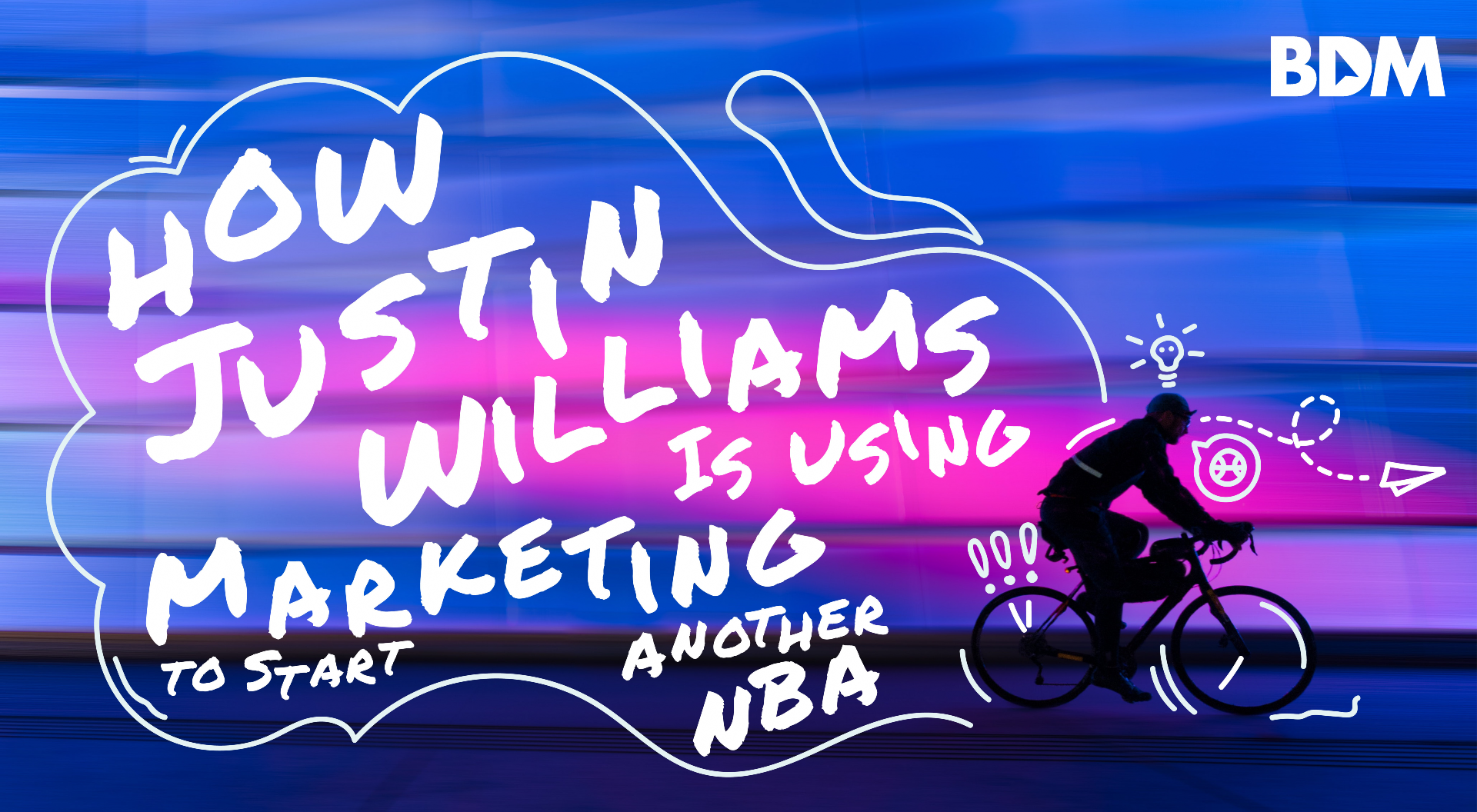Justin Williams is a professional road bicycle racer who’s won many big championships. He’s ridden for the USA Cycling National Team and other pro teams. He’s raced in Belize (his parents’ home country), France, Belgium, and Canada. With all his success, you would’ve assumed he was happy with his career. But he wasn’t. So he stepped away.
He would co-found a cycling team: the now famous L39ION of Los Angeles (the L39ION stands for “legion”). And they win, A LOT. As we said, his team is famous — and that’s exactly what Williams wants. In fact, Forbes stated that Williams thinks of L39ION as a marketing firm rather than a traditional cycling team.
Williams sees the international attention he’s receiving as a way to achieve his goals: popularizing bicycle racing to the level of the NBA and creating opportunities for outsiders like himself to join the exclusive sport. So far, he’s succeeded.
To learn more about Justin Williams’ marketing tactics, keep reading!

Image credit: Specialized Bicycles
5 Steps to Making a Star
William’s marketing playbook is partially inspired by the NBA. He says that in pro ball, every franchise wants to market star players like the late Kobe Bryant, who fans spent a lot of time and money watching.
But in pro cycling, outstanding athletes aren’t supported or encouraged to become stars. He believes this happens because team owners and managers find big stars hard to deal with and require salaries they aren’t willing to pay.
To create stardom, Williams works very hard to win races and documents the exciting parts of his and L39ION’s journey. If you watch their races, you’ll see they’re the only team with cameras mounted to their helmets and bikes. This footage is later uploaded to YouTube (sometimes with fun music and insightful commentary).
In addition to his vibrant social media presence, Williams has been the subject of numerous documentaries and interviews. He has business partnerships with influential companies like Red Bull, Zwift, Rapha, and Specialized. These companies sponsor his races or produce custom jerseys and shoes for his fans.
Williams and his team are famous for their fashion choices, which differ vastly from other teams. They wear bright and highly patterned jerseys, and thick gold necklaces and walk around in basketball sneakers. This sense of style is natural to Williams, but he plays it up to draw fans who wouldn’t usually care about cycling.
When his team travels the country, they meet with people in the local community before their races to raise awareness of their sport and talk with fans. This is important because most pro teams sit in their hotels until race day.
Williams does all the above to make fans feel attached to him, and his team.
5 things to take away from this section: 1) Work hard to produce an excellent/winning product or service, 2) constantly produce all kinds of relatable media, 3) regularly engage on social media platforms and in-person, 3) seek out relevant and mutually beneficial business partnerships, and 5) incorporate your personality into your branding.
Image credit: nationsnumber1beast
The Art of Attachment
You don’t have to be a champion athlete for people to become attached to your brand. In a recent podcast, marketing expert Jesse Bryan addressed why some brands fail to create this attachment. He said it’s because their marketing campaigns don’t include conflict.
Conflict is made up of two things: struggle and pain. Generally, most brands show struggle, but they pull back from really showing the pain caused by that struggle. This pulling back results in ads that are not impactful.
To show struggle, you must acknowledge your customers’ goal and the obstacle stopping them. So your ads should say, “We see you’re trying to achieve this goal, but this obstacle is stopping you, and solutions ‘a,b,c’ haven’t worked.”
To show pain, you must address their bad feelings. Your ads should also say, “We see how your struggle makes you feel”. Select a pain point your audience feels, such as “not hopeful about the future or insecure about your intelligence”.
Lastly, introduce your product or service by saying, “My product is the solution to achieving your goal because ‘x,y,z’”.
A candle shines brightest in the dark. Likewise, your customer’s struggle is the dark, and your product is the light. Your product will shine bright when you lean into your customer’s struggle.

Image credit: @juswilliamz
A Winning Pitch
We’ve gone over five tactics Justin Williams uses to grow his brand and the general principles of creating ads that produce attachment. Now we’ll look at the message or pitch at the center of Justin Williams’ marketing and show how you can craft a good message too.
His pitch goes something like this: I survived childhood in poor and violent South Central Los Angeles and used competitive road cycling as an escape. I became a world-class racer, but the world of professional cycling looked down on me because I was different. I felt disrespected and alone. That should upset everyone who’s been made to feel bad because they’re different. No other racer or team has been brave enough to fight against this bullying until L39ION of Los Angeles. Show us support by purchasing our merchandise and tickets to our races. When you do this, it sends a message to the bullies that the culture of the sport needs to change!
It’s an effective pitch, in our opinion. It covers all the bases: goal, obstacle, pain, and solution.
Let’s say you sell residential window repair services. Your pitch could be: Safety is a high priority for you. But if your window’s been broken, it means glass shards everywhere and compromised security. This results in you feeling vulnerable and afraid. It makes you feel unsafe. If you have children or pets, those feelings are heightened. So give us a call, and we’ll come quickly, clean everything, and restore your safety by restoring your window.
To recap, use these tactics: make a winning product, produce lots of quality media, post and engage on social media and in-person, and regularly work with other businesses. And your message should include your customer’s goal, obstacle, pain, and your solution! If you need help doing these things for your business, contact Big Deal Marketing by clicking here.



0 Comments